How Australia’s best batsmen prepare for the fastest bowlers in the world
Removing the fear factor, scoring not surviving, and ‘seeing’ not ‘watching’: this is the science of staring down the world cricket’s speed demons.

Cricket
Don't miss out on the headlines from Cricket. Followed categories will be added to My News.
Sir Donald Bradman stood at the crease in the infamous 1932-33 Ashes series dressed as a target for England’s fast bowling cartel.
Bradman was hammered with bouncer after bouncer after bouncer as England captain Douglas Jardine’s ‘Bodyline’ tactics helped make the invincible batsman appear human for once.
Bradman batted without a helmet. He also batted without fear.
In a story passed down from Greg Chappell, Bradman was asked by the former Australian captain which bowler he dreaded the most.
“This is fact – Bradman said it’s the bowler that can bowl the full ball, or the ball that hits the top of the stump,” Cricket Australia’s National Cricket Centre bowling coach Troy Cooley told News Corp.
Watch every ODI, T20 & Test Match of India’s tour of Australia LIVE with no ad-breaks during play on Kayo. New to Kayo? Get your free trial now & start streaming instantly >
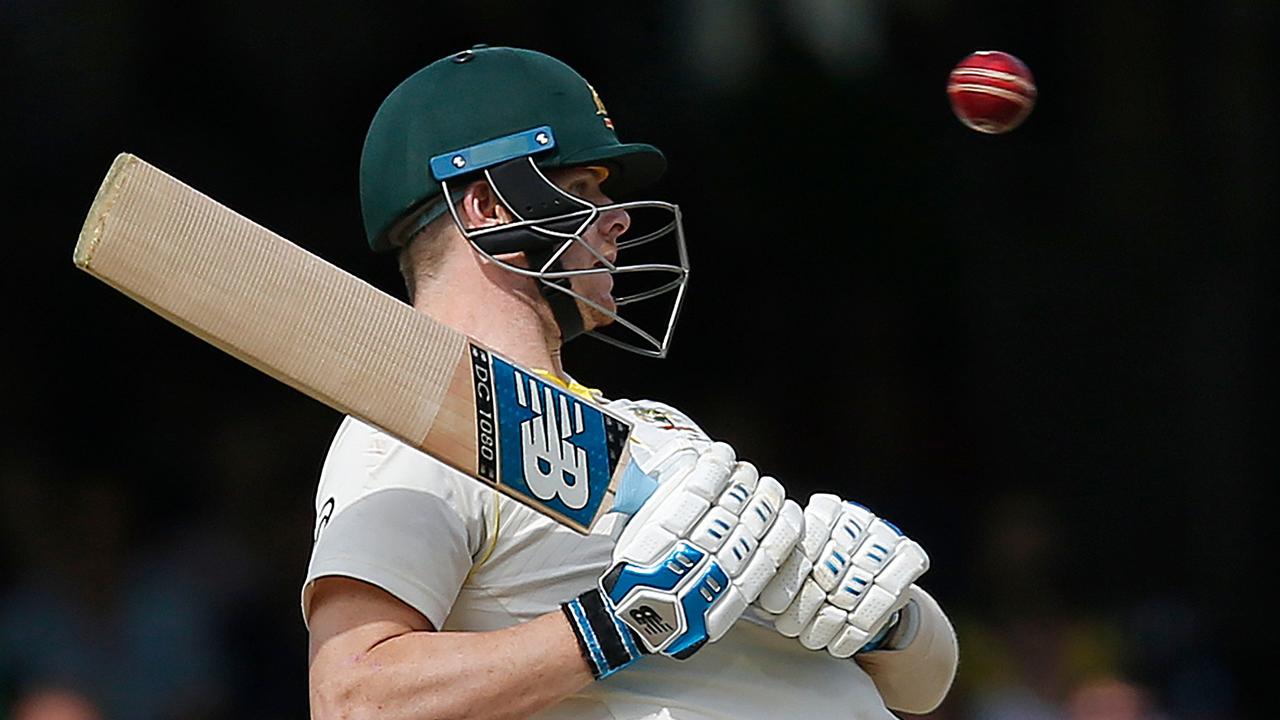
“Because that could get him out any way. He wasn’t necessarily fearing the bouncer, even though he went through that tumultuous time.
“The physical fear had gone, and the thing that took over was the fear of getting out and not being able to score runs.
“That was more than the fear of getting hit and getting hurt.”
What’s it like facing chin music?
Well, a short ball fizzing in at 140km gives a batsman half a second to react.
“Once you get up to 150km-plus it’s getting closer to 0.4sec,” CA sports scientist Rian Crowther said.
That extra fraction of a second can feel like a lifetime.
MORE CRICKET NEWS:
Replacing Kohli: how to answer cricket’s toughest question
Virat’s baby dash show how times have truly changed
Inside the making of India’s pace bowling arsenal
Thommo’s top 10 pace bowlers of all time
“Have a look at Usain Bolt, that amount of time can win a gold medal,” Cooley said.
“It can actually cause you to be either in line or out of line with the ball.”
Flashbacks of English TV host Piers Morgan suffering a broken rib as he courageously, but clumsily, padded up for a Brett Lee over in 2013 come to mind.
But the Ricky Pontings of the world search for cues faster than FBI special agent Dale Cooper searched for evidence.
“The skilled batters aren’t necessarily reacting any quicker, but they’re starting to move earlier because they’re picking up different information,” Crowther said.
“It’s instinctive. Looking around the field, knowing a bowler’s history, previous balls they’ve bowled.
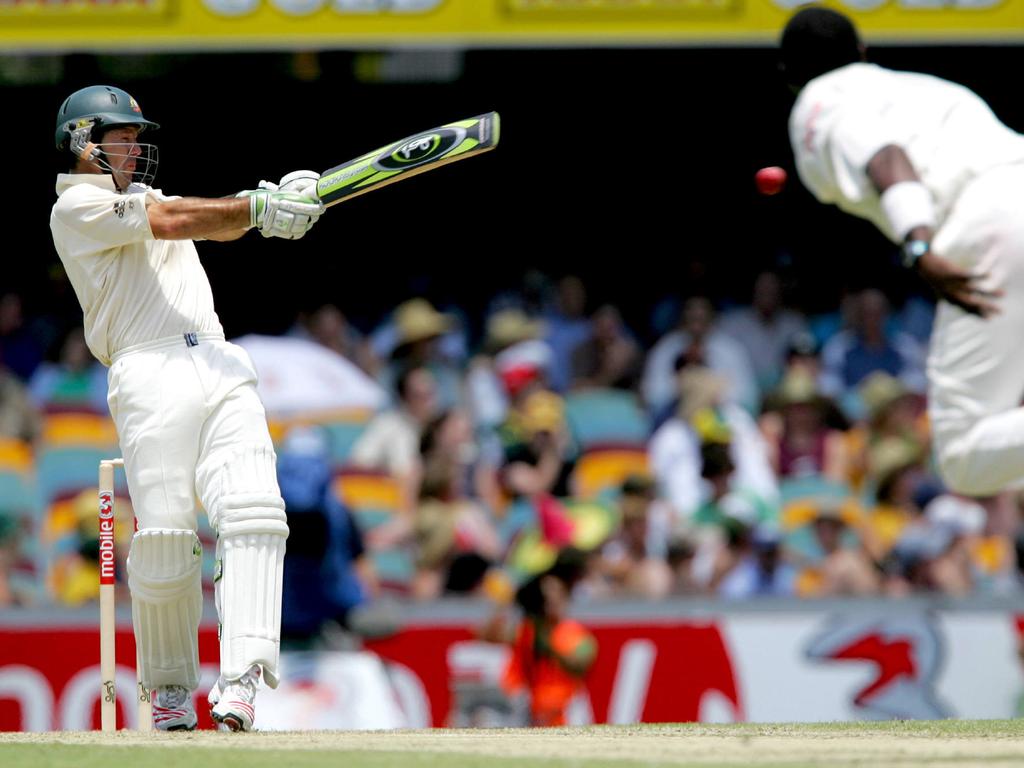
“You’ve got to pick up information that other people aren’t that allow you to anticipate what’s coming.”
“It’s called problem-solving,” Cooley said.
“We need a good decision-making process to start with. You’ve got to make sure that’s locked into the learning mechanism at the back of your brain and it becomes an instinctive reaction.
“It’s, ‘I’ve seen this, I’m not even going to think about going back or forward’ – it’s already done.”
Several sports teach players to watch the ball. Cooley said that wasn’t enough.
“You’ve got to see the ball,” he said.
“A lot of people say watch the ball, but it’s got to come back to actually seeing the ball.
“If you can see the ball you’ll know whether it’s going to be a short or a full one by when it is let go out of the bowler’s hand.

“If you’re in a Greg Chappell class a batter is always taught to expect a full ball.
“Because a full ball is let go first out of the hand. Anything after that – if it is let go later – that is going to be a short ball.”
Cooley talks about the three Fs with his bowlers – flight, freeze and fight.
Can they instil fear in a batsman?
“If we can then nine times out of 10 the bouncer will put a freeze on decision making,” Cooley said.
“Flight will be in there, because they want to get out of there quickly.
“If I can get that into the batsman’s mind, then I can get them to make a false choice, and then I can get them out – which is my No. 1 job.”
That mental battle is massive.
“When we talk about 0.4sec for 150km, think about what’s happening when Matthew Hayden starts walking at Shoaib Akhtar, who’s bowling 155km-plus,” Crowther said.
“Think about the time he’s going to have to react. There’s a psychological component to that, because he’s crazy – no one in their right mind would do that.
“So you’ve got to think about why is he doing it. It’s to try and put that psychological pressure back on him.”
Remember last summer when New Zealand workhorse Neil Wagner went on a bumper barrage?
Well, Matthew Wade took a physical pounding as he absorbed blow after blow and was labelled “crazy” by coach Justin Langer.
“Keep coming, big boy,” Wade dared Wagner, refusing to be intimidated.
“You’ve got to get past that physical fear,” Cooley said.
“That’s why a lot bat down at 10 or 11 — you didn’t overcome that physical fear, the threat of being severely hurt.
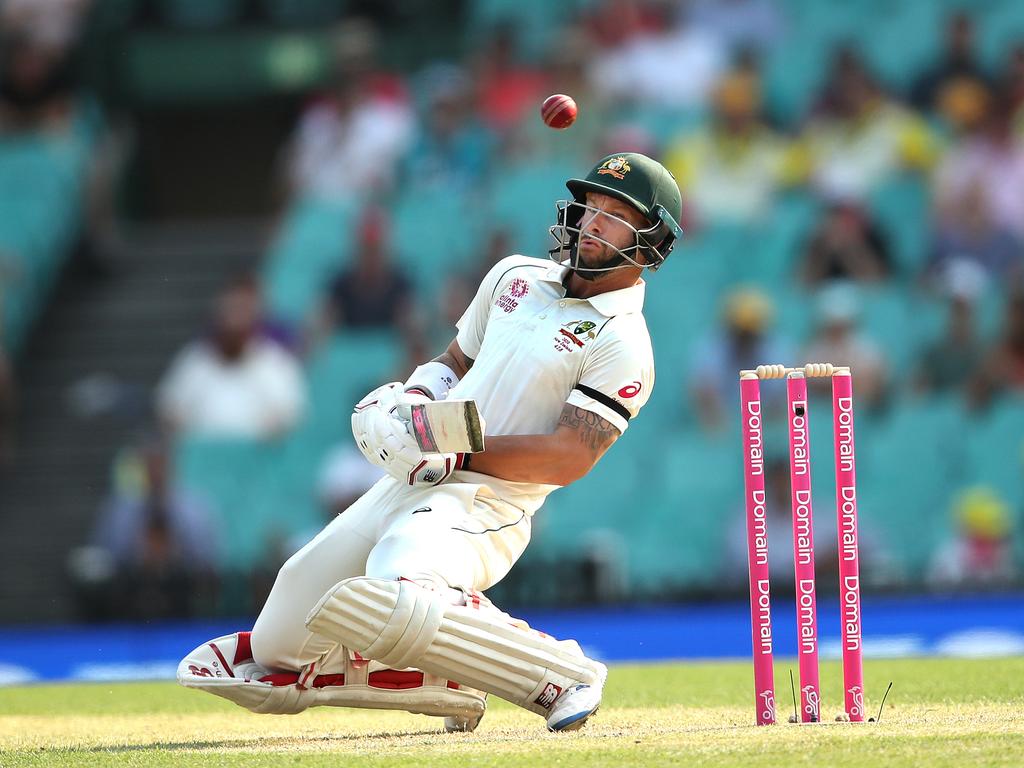
“For batsmen it’s get rid of that physical fear factor and try and instil in them that your job is to score runs, and you can’t score runs if you get out.
“Then they go, ‘OK, that hierarchical chain goes up and getting hurt comes down to the bottom’.”
Shane Warne wasn’t a specialist batsman, but he didn’t mind a short ball.
“I was lucky enough that I could hold a bat,” he said.
But going from zero to a hundred at the MCG on Boxing Day?
No thank you.
“You’re sitting on your backside watching the batters for four or five hours and then suddenly you’ve got your pads on facing Shoaib Akhtar bowling 155-160km, or Wasim Akram reversing it around corners.
“You’ve got to walk 100m out to the MCG crease after sitting down the whole time, and then switch on for someone that’s bowling absolute thunderbolts.
“For some of those fast bowlers who can’t bat, I hate to think how scary it must be for them. The fear factor for tailenders is bloody huge.”
Recent studies have locked cameras on to a batsman’s eyes, and showed it is not possible to track the ball the entire way.
“So we do it at little points in time,” Crowther said.
“Release, bounce and contact.”
The batsman must make a prediction between saccades.
“They would transfer their eyes to where they thought the ball was going to land, so they didn’t actually watch the ball all the way,” Cooley said.

“They saw the information, they predicted it was short, they then transferred their eyes to where they thought the ball was going to land, and then they took up their position to score or defend.”
But that technology isn’t practical to use regularly. In fact, for all the whizzbang gadgets available it is hard to go past the old-fashioned net bowler.
“It’s not quite as flashy a response, but the best thing you can do is face a bowler,” Crowther said.
“All the pieces of technology you put around it are great for volume, but none of them actually replicate what a bowler can do when they’re running in.
“It’s a balance. You can get net bowlers in, but maybe they don’t bowl as fast, but you get the cues.”
Next up is the sidearm, which retail for as little as $50.
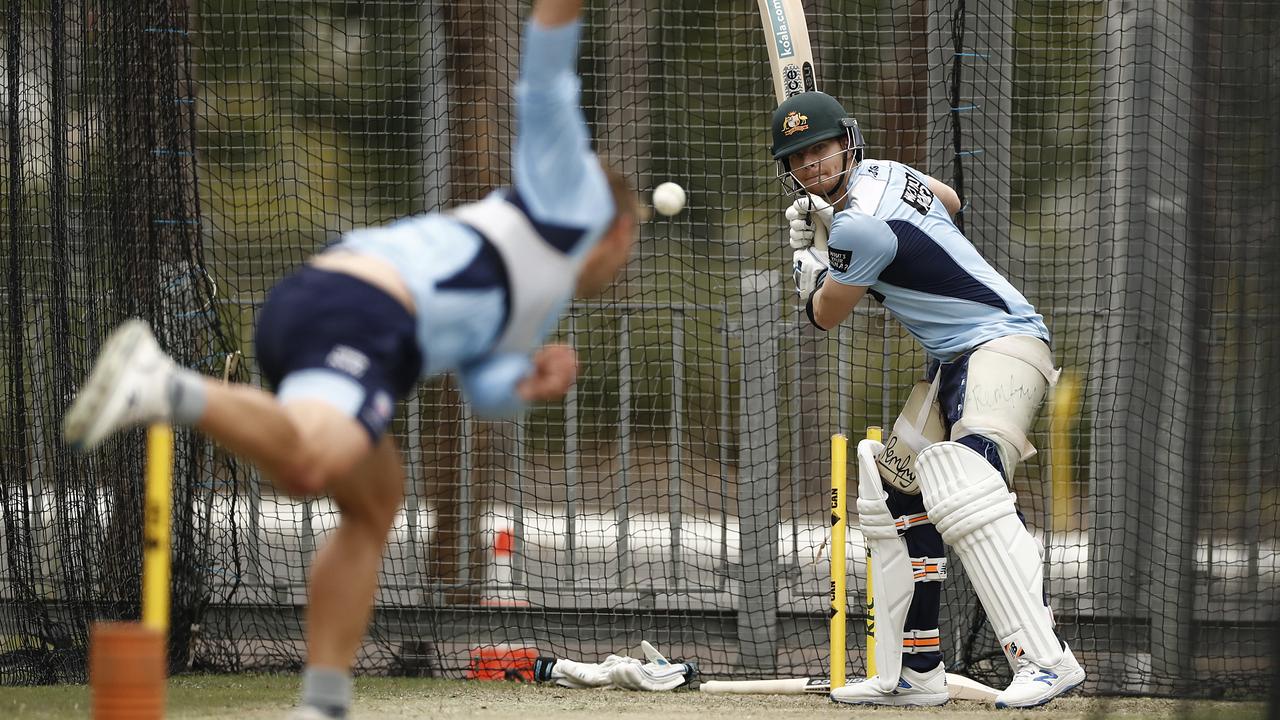
“It’s an easy way that the coaches can save their shoulders and get a bit more pace on the ball and get a lot more volume.
“They tape it up and you get the ball coming through a bit quicker and not much reaction time.
“Players still do use bowling machines, and we’ve got a ProBatter bowling machine.
“But when it comes to the short ball the thing we need to be careful of with that machine is that the release time is always at the same point.
“So you don’t get the cue from the bowler running in with that extra bit of effort.
“Even the sidearm has its issues as well, because it flicks at the end, so you don’t quite get the same cues.”
For a bowler it is all about slamming it in short enough so the ball rises steeply.
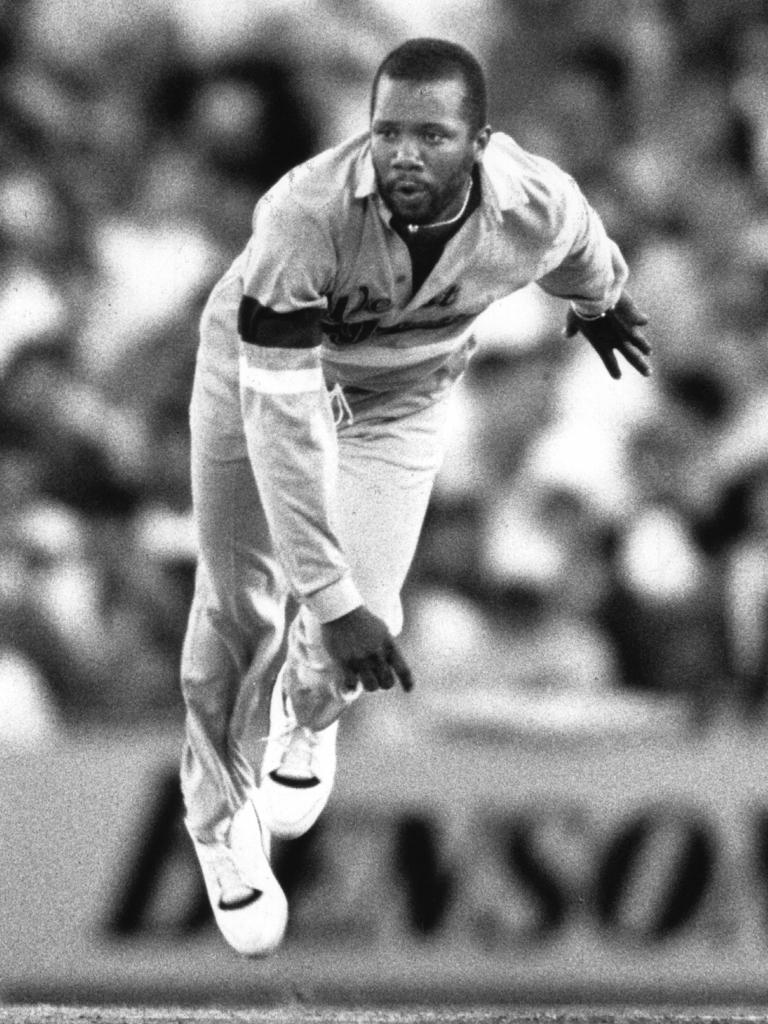
“You want to get the hands, so it has to be above shoulder height where they lose control of getting the ball down to the ground,” Cooley said.
“You always err on the side of a little bit more height and go for a wide than go for a half-tracker.”
When CA conducts opposition analysis its data scientist pulls up Hawkeye.
“One of the first points of call is what their lengths are,” Crowther said.
“Are we seeing any lower averages, lower strike-rates? In the talent ID space it becomes about decision making.
“We know when someone faces a short ball they should generally be going back, and when someone faces a full ball they should generally be going forward.
“If they’re not always going back, is that an area you need to work on?”
But as captivating as the theatre can be – think Jofra Archer’s battle with Steve Smith at Lord’s last year – Cooley said 80 per cent of wickets were taken with full deliveries.
While Glenn Maxwell has had his battles, the short ball is largely a tall order for the tail.
“I’ve seen the top six absolutely undermine their emotional states when the ball starts moving,” Cooley said.
MORE CRICKET NEWS
Batting stars reveal the scariest spells they ever faced
Why Warner holds the key to Pucovski’s debut hopes
How India’s quicks are built to take down Aussies
The two pacemen Thommo rates higher than Lillee
“You can see a swinging ball early, but the seaming ball doesn’t move until it bounces.
“That’s the latest possible ball, and the hardest ball, to be able to predict and change.
“So you look at (James) Anderson, (Glenn) McGrath, Akram, they all had the ability to move the ball.
“The fast bouncer – definitely for the bottom five, and a couple of the top six every now and then.
“But once somebody gets through that physical fear, the ball that gets them out is the ball that moves, the ball that’s going to hit the top of their stump or the full ball.”
West Indies quick Michael Holding said it was a myth that his hostile attack bounced the Aussies out in the 1980s.
Holding said they got most of their wickets by striking batsmen on the pads and crashing their stumps, rather than stacking the field behind square leg.
Cooley – who was England’s secret weapon as bowling coach in the 2005 Ashes – loved Freddie Flintoff’s “hard, sharp” bouncer.
McGrath cracked Kevin Pietersen’s rib with a doozy in 2011 while Steve Harmison’s “angled back” beautifully.
But the best of the best?
“Mitchell Johnson,” Cooley said.
“That’s based on facts – nobody wanted to face him in nets, because he could hurt them.”
Originally published as How Australia’s best batsmen prepare for the fastest bowlers in the world



